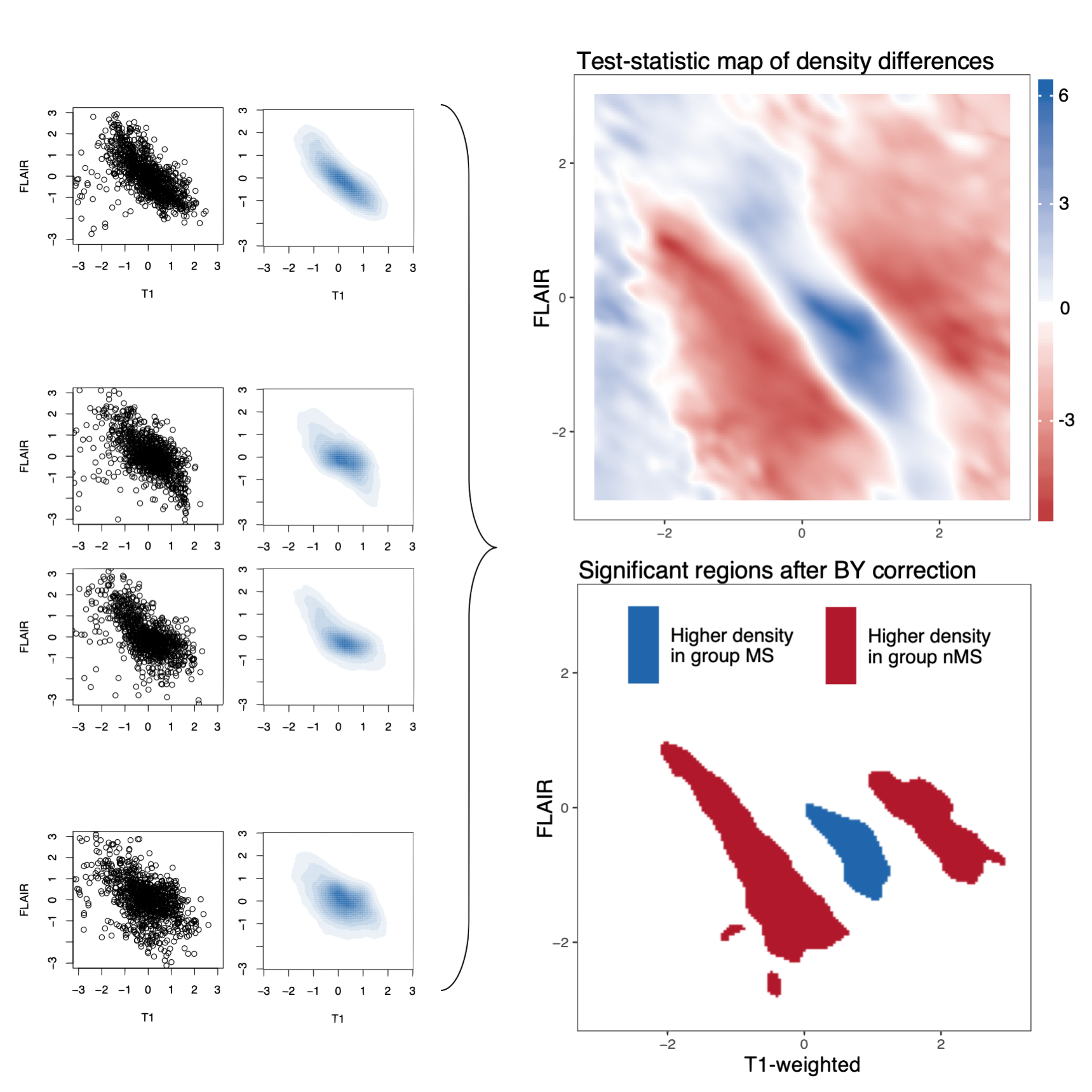
Statistical methods for diagnosis and screening using neuroimaging data
The use of magnetic resonance imaging (MRI) for detecting disease-related pathologies can be hampered by the infeasibility of manual inspection. For visible structural pathologies, rigid criteria can lead to high time burdens on already over-burdened clinicians. For diffuse, unobservable, or multi-modal pathologies, it may be difficult or impossible for a clinician to obtain accurate visual assessments. To enable faster and more powerful detection of pathologies in brain tissue, my colleagues and I work on developing data-driven statistical methods that can make probabilistic and inferential conclusions about the occurrence of tissue abnormalities, and can reveal links to disease status or patient characteristics.

